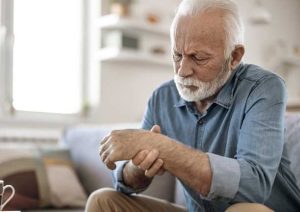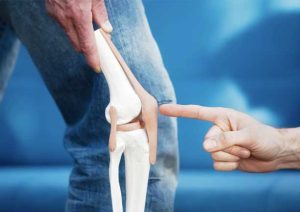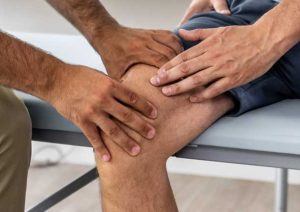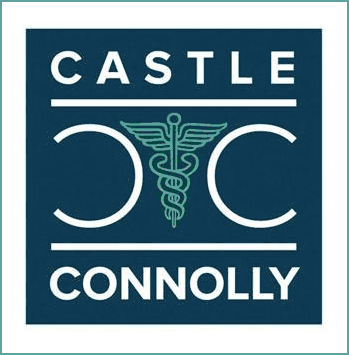
The Hidden Impact of Extra Weight on Your Bones, Joints, and Mobility
Learn how carrying extra weight impacts your bones, joints, and mobility. Discover expert tips and treatments from OrthoConnecticut for better joint health!

Learn how carrying extra weight impacts your bones, joints, and mobility. Discover expert tips and treatments from OrthoConnecticut for better joint health!

Arthritis and osteoarthritis are often used interchangeably but are distinct conditions with different causes, symptoms, and treatments. Understanding the nuances of each helps you better manage your joint health.Arthritis, a comprehensive term, encompasses a spectrum of conditions characterized by inflammation of the joints. There are over 100 types of arthritis, including osteoarthritis, rheumatoid arthritis, and psoriatic arthritis, among others. The common denominator among these inflammatory conditions is joint pain, stiffness, swelling, and decreased range of motion.Osteoarthritis is the most prevalent form of arthritis and typically develops with age or as a result of joint injury or obesity. It occurs when the protective cartilage that cushions the ends of bones wears down over time, leading to bone-on-bone contact, inflammation, and pain. Osteoarthritis commonly affects weight-bearing joints like the knees, hips, and spine.Distinguishing between arthritis and osteoarthritis is crucial for accurate diagnosis and effective treatment. While arthritis encompasses a broad spectrum of joint disorders, osteoarthritis specifically refers to the degenerative wear-and-tear of cartilage.Treatment approaches for arthritis and osteoarthritis vary depending on the underlying cause and severity of symptoms. Non-surgical interventions such as lifestyle modifications, physical therapy, medications, and injections may provide relief for mild to moderate cases. However, in severe or advanced osteoarthritis cases where conservative measures fail to alleviate symptoms, surgical options like joint replacement surgery may be considered to restore mobility and quality of life.At OrthoConnecticut, our team of orthopedic specialists is dedicated to diagnosing and treating arthritis and osteoarthritis with personalized care plans tailored to each patient’s unique needs. Whether you’re experiencing joint pain, stiffness, or swelling, we’re here to help you find relief and regain function.If you’re struggling with joint pain or suspect you may have arthritis or osteoarthritis, don’t hesitate to contact us. Schedule a consultation with one of our experienced orthopedic providers to explore your treatment options and take

Medically reviewed by Dr. Michael Brand The rapid rise of pickleball, a fast-paced and exhilarating sport, has been remarkable. With its blend of tennis, badminton, and ping-pong, pickleball offers a unique avenue for recreation, athletics, and competition. However, like any physical activity, it comes with its share of risks, especially concerning bone, joint, and musculoskeletal injuries. Our orthopedic professionals recommend proper injury prevention techniques and treatment to avoid injury and maintain optimal health. The Most Common Pickleball Injuries Despite its relatively low-impact nature compared to other sports, pickleball can still lead to injuries, particularly in the joints and muscles. Common pickleball injuries include: Orthopedic Treatment for Pickleball Injuries Prompt evaluation and treatment are crucial for addressing pickleball-related injuries effectively. Orthopedic specialists play a pivotal role in diagnosing and managing these conditions. Here’s what patients can expect during their orthopedic care: Returning to Pickleball Safely: While the desire to return to the court may be strong, it’s essential to prioritize a gradual and controlled comeback. Light drills and gradually increasing intensity can help assess readiness and prevent re-injury. Communicating with your orthopedic physician or physical therapist allows for ongoing progress monitoring and adjustment of treatment plans as needed. Injury Prevention: What Doctors Wish People Knew About Preventing Pickleball Injuries Orthopedic doctors play a crucial role in treating pickleball injuries, and they often have valuable insights into preventing these injuries from occurring in the first place. Here are some key points that doctors wish people knew about preventing pickleball injuries: 1. Warm-Up Properly Doctors emphasize the significance of warming up before engaging in pickleball or any physical activity. A proper warm-up routine helps increase blood flow to the muscles, improve flexibility, and prepare the body for gameplay demands. Dynamic stretching, light cardio exercises, and joint mobilization techniques are essential to a good

Psoriatic arthritis is a chronic autoimmune disease that affects millions of people worldwide. It is a type of inflammatory arthritis that causes joint pain, stiffness, and swelling, and is often accompanied by the skin condition psoriasis. Doctors help patients identify the symptoms of psoriatic arthritis. Early diagnosis and management are key and there are many treatment options to alleviate discomfort and slow disease progression. What is Psoriatic Arthritis? Psoriatic arthritis is a type of arthritis that affects people who have psoriasis, a skin condition characterized by red, scaly patches on the skin. It is an autoimmune disease, which means that the body’s immune system mistakenly attacks healthy cells and tissues, causing inflammation and damage. Psoriatic arthritis can affect any joint in the body, but it most commonly affects the joints in the fingers, wrists, knees, toes and ankles. It can also cause inflammation in the spine, leading to pain and stiffness in the neck and lower back. Symptoms of Psoriatic Arthritis The symptoms of psoriatic arthritis can vary and change over time. Some common symptoms include: Not everyone with psoriatic arthritis will have all of these symptoms. Some people may experience mild joint pain, while others may have severe joint damage and disability. Diagnosing Psoriatic Arthritis Diagnosing psoriatic arthritis can be challenging, as its symptoms can be similar to other types of arthritis, such as rheumatoid arthritis. However, there are some key differences that can help doctors make an accurate diagnosis. Firstly, psoriatic arthritis usually affects the joints on both sides of the body, while rheumatoid arthritis typically affects joints on one side of the body. Additionally, psoriatic arthritis often causes swelling in the fingers and toes, while rheumatoid arthritis does not. To diagnose psoriatic arthritis, doctors will typically perform a physical exam, review the patient’s medical history, and order

Quadriceps tendon repair is typically needed for individuals who have sustained an injury or tear in the quadriceps tendon. Read on to learn more about general post op protocols, what the best sleeping options are post op, when one can expect to walk and exercise post op, as well as tips on speeding up recovery. The quadriceps tendon is a thick, strong tendon that connects the quadriceps muscles in the thigh to the patella (kneecap). This tendon is essential for normal knee function and allows for movements such as running, jumping, and walking. Quadriceps tendon injuries can be sustained due to a number of reasons, including: Individuals who may require quadriceps tendon repair often experience symptoms such as severe pain, swelling, difficulty walking or extending the knee, and a noticeable gap or indentation above the patella where the tendon has torn. Quadriceps tendon surgical repair is typically recommended for individuals who have significant tears or complete ruptures of the tendon. What does typical Quadricep tendon repair post op protocol look like? The postoperative recovery for Quadricep tendon repair may vary depending on the surgeon’s preferences, the extent of the injury, and individual patient factors. A general outline of a typical postoperative protocol for quadriceps tendon repair looks something like this: Immobilization Following surgery, the knee is usually placed in a hinged knee brace or a cast to protect the repair and promote healing. The immobilization period may last for several weeks, during which weight-bearing is restricted or completely prohibited. Ice and Elevation Ice therapy and elevation are commonly recommended to reduce pain, swelling, and inflammation. Ice packs or using an ice machine can be applied to the surgical site for 15-20 minutes at a time and elevating the leg above heart level can help in the early stages of recovery.

Post-operative recovery following ACL reconstruction typically involves a rehabilitation program that includes a customized combination of physical therapy, exercises, and rest. The goal of rehabilitation is to regain range of motion, strength, and stability in the knee. This process can take several months and may include the use of crutches, bracing, and other assistive devices. Physical therapy is generally started within the first week or two after surgery and may continue for several months. It is important to follow your surgeon’s instructions and adhere to the rehabilitation plan to ensure the best possible outcome.

Did you know? The knee is one of the body’s most intricate joints. As the largest and most complex joint in the body, it joins together the thigh bone, shin bone, fibula (on the outer side of the shin), and kneecap. As it is essential for movement, the knee is also one of the most stressed joints in the body and is quite vulnerable to injury.

Key Takeaways Everyone experiences occasional pain in their knee(s). But there are some symptoms that you just shouldn’t ignore. These can point to larger problems in your knee, like a stress fracture. Even though stress fractures are not as serious or painful as a broken bone, they should not be ignored. If left untreated, they can lead to tiny cracks that transform into more serious issues. If you are experiencing knee pain, you should be aware of certain sensations that might point to something worse that needs attention. The Most Common Knee Stress Fracture Symptoms A stress fracture is a minuscule crack in the bone that is caused by repetitive use or trauma. Commonly seen in athletes, stress fractures occur over time and are often in the shins, foot, heel, and knee. Because the crack is so small, pain from a stress fracture tends to be less severe than broken bone pain and the problem is sometimes harder to diagnose. Stress fractures that occur in the knee are normally harder to diagnose than a stress fracture in the tibia or foot. The most common knee stress fracture symptoms include: If you are experiencing any of these symptoms, you may have a knee stress fracture and should contact an orthopedic knee specialist at OrthoConnecticut as soon as possible. Causes of Knee Fractures Knee fractures are not common and are usually caused by direct impact to the kneecap. This can happen from a car accident, a hard fall, or a sports injury. If you suffer from osteoporosis or a bone infection you may be at higher risk of a knee fracture from seemingly minor injuries. Stress fractures in the knee are more common among long-distance athletes like runners. The repetitive movement causes trauma to the bones that make up the knee structure.

10 Tips for Managing Knee Pain When You Travel Knee pain while traveling is common, but if you’re prepared you don’t have to be sidelined. What Causes Knee Pain While Traveling? Sitting in tight, no-room-to-stretch airline seats, bouncing trains or buses, and sitting in one position in a car for too long can exacerbate pre-existing knee conditions or create knee stiffness and muscular cramping. Whether it’s arthritis, runner’s knee, kneecap, meniscus, ligament, or other knee conditions causing you discomfort, employing these helpful strategies can reduce or eliminate knee pain while traveling. Strategies to Manage Knee Pain When Driving Tips to Prepare for Travel Tips for Treating Knee Pain Post-Travel OrthoConnecticut Can Help Our physicians and physician assistants are available for travel consults in advance of your journey. Contact us today for an appointment and enjoy a safe and wonderful trip!
Call OrthoConnecticut today at 1.833.678.4628 to learn more or to schedule an appointment.
Accessibility statement
for individuals with disabilities:
We are committed to ensuring that our website and mobile applications are accessible to individuals with disabilities. Please use the blue icon in the lower right corner to access many helpful tools. If you need assistance using our website, or assistance with a document on the website, we can help you. Please contact us by email at info@myorthoct.com or by telephone at 1.833.ORTHOCT (1.833.678.4628).
1.833.ORTHOCT
(1.833.678.4628)



Accessibility statement
for individuals with disabilities:
We are committed to ensuring that our website and mobile applications are accessible to individuals with disabilities. Please use the blue icon in the lower right corner to access many helpful tools. If you need assistance using our website, or assistance with a document on the website, we can help you. Please contact us by email at info@myorthoct.com or by telephone at 1.833.ORTHOCT (1.833.678.4628).
We are committed to providing comprehensive care to Fairfield County, New Haven County, Litchfield County; New York State's Westchester, Dutchess, & Putnam Counties; and the Great Barrington region of Massachusetts.
This website provides general information about OrthoConnecticut, its practice areas and professional staff. Nothing in this website constitutes individual medical advice which may only be obtained as a result of personal consultation with a physician. Sending an e-mail to OrthoConnecticut, its physicians or office staff does not create a patient-physician relationship.
© 2025 OrthoConnecticut | Accessibility Statement | Site Map | Terms of Use | Non-Discrimination Policy | Website Design: Brandmark Studios